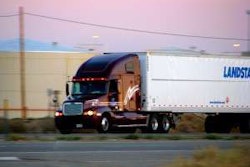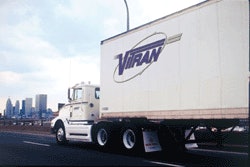In testimony before a Senate subcommittee on Thursday, July 21, a trucking executive urged Congress to adopt several initiatives to improve highway safety. Dan England – chairman and president of C.R. England Inc., and vice chairman of the American Trucking Associations – urged Congress to raise the bar for new companies entering the industry by requiring them to successfully complete training and an examination before being permitted to operate – and to undergo an initial safety audit within six months of commencing operations, not 18 months which is the current standard.
In addition, England called for improvements to the Federal Motor Carrier Safety Administration’s Compliance Safety Accountability safety monitoring and measurement system. “ATA has supported CSA from the outset,” said England, “However, the integrity of the system is hindered by underlying data quality and methodology issues. As such, its use as a system to reliably identify unsafe carriers and drivers is somewhat limited.”
England also urged Congress to look beyond the current enforcement and compliance system as the primary means to improve truck safety. Specifically, he pointed to the need to create a national system to provide employers with timely notification of drivers’ moving violations and a drug and alcohol test result clearinghouse, both as tools to help “leverage the size and power of the industry to achieve the mutual objective of improving highway safety.”
England reiterated ATA’s support of a federal mandate for electronic onboard recorders but stressed that such a mandate should be coupled with retention of the current hours-of-service rules. He pointed out that the industry’s safety record has improved dramatically since the current regulations were put in place in 2004, and that given these improvements, the most appropriate course of action is to improve compliance with the current rules by mandating EOBRs.
England also stressed the need to broaden the focus of truck safety initiatives to get at the most prevalent causes of truck crashes. “The single largest factor impacting truck safety is the behavior of other motorists,” said England. “Hence, focusing almost exclusively on motor carriers and their drivers directs attention to a small part of the equation.”











